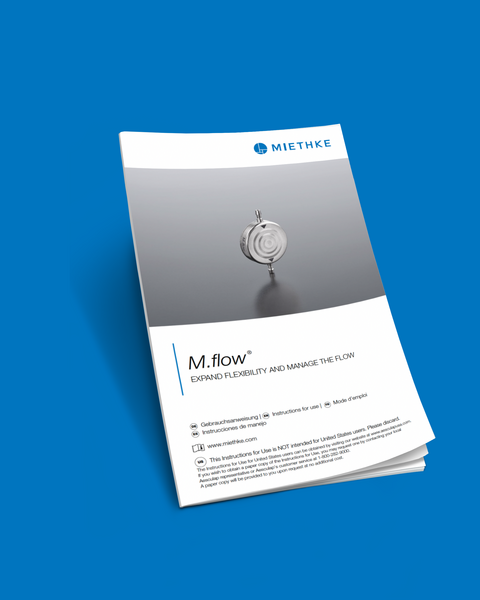![[Translate to English:] M.flow, ein Shunt mit verstellbarer Drosseleinheit, und M.blue ein Shunt mit verstellbarer Gravitationseinheit, beides zur Behandlung von Hydrocephalus](/fileadmin/_processed_/f/a/csm_MIETKE_Mflowplus_und_Verstellinstrumente_Teaser_b64de92e27.png)
M.flow®
FEATURES - EXPAND FLEXIBILITY
- Expanded flexibility: minimum to maximum adjustable flow reduction.
- Innovative shunt closure: Real Off Setting for an adjustable closure of the shunt system.
- Pumping function: The M.flow allows distal pumping.
- The M.flow can be adjusted intuitively, safely, comfortably and non-invasively. Adjustment is performed using proven adjustment technology.
- MRI-compatible up to 3 Tesla: no X-ray control after MRI necessary, no additional radiation exposure for the patient.
- Protected against unintentional adjustment by means of exposure to magnets found in daily life.
Manage the Flow
Each case of hydrocephalus is as individual as the person affected. Only a flexible therapy makes it possible to respond to individual needs. The M.flow is an adjustable flow reducing valve that can be implanted in addition to gravitational or differential pressure valves.
In a shunt system, gravitational and differential pressure valves determine when cerebrospinal fluid is drained. The M.flow offers the additional option of adjusting the flow rate in the shunt system individually. The different flow reduction levels can be used to adjust how quickly cerebrospinal fluid (CSF) is drained when the gravitational or differential pressure valve opens. The M.flow can therefore be used to manage the drainage volume in addition to the opening pressure.
With the Real Off, the M.flow has an additional switch-off function, which enables the flow in the shunt system to be completely stopped.
M.flow®
Functionality - in detail
The M.flow can be used to manage the flow resistance in the shunt system, allowing the flow rate in the shunt system to be controlled. The drained cerebrospinal fluid (CSF) flows into the M.flow and through the small diameter flow channel.
To adjust the M.flow, release the Active Lock mechanism with the proven MIETHKE adjustment technology and allow the rotor to rotate: This allows the length of the flow channel to be changed. The longer the flow channel, the higher the flow resistance and the lower the flow rate.
Additionally, the Real Off allows the flow to be cut off and the shunt system to be switched off. The inlet to the flow channel is hereby closed.
In a shunt system where a gravitational or differential pressure valve determines the opening pressure, the M.flow makes it possible to manage the flow rate precisely. The order of the valves has no influence on the operation. M.flow is position independent and does not require implantation parallel to the body axis.
 | The hydrostatic and hydrodynamic laws of physics in a shunt system are explained by one of our engineers in the MIETHKE Journal. |
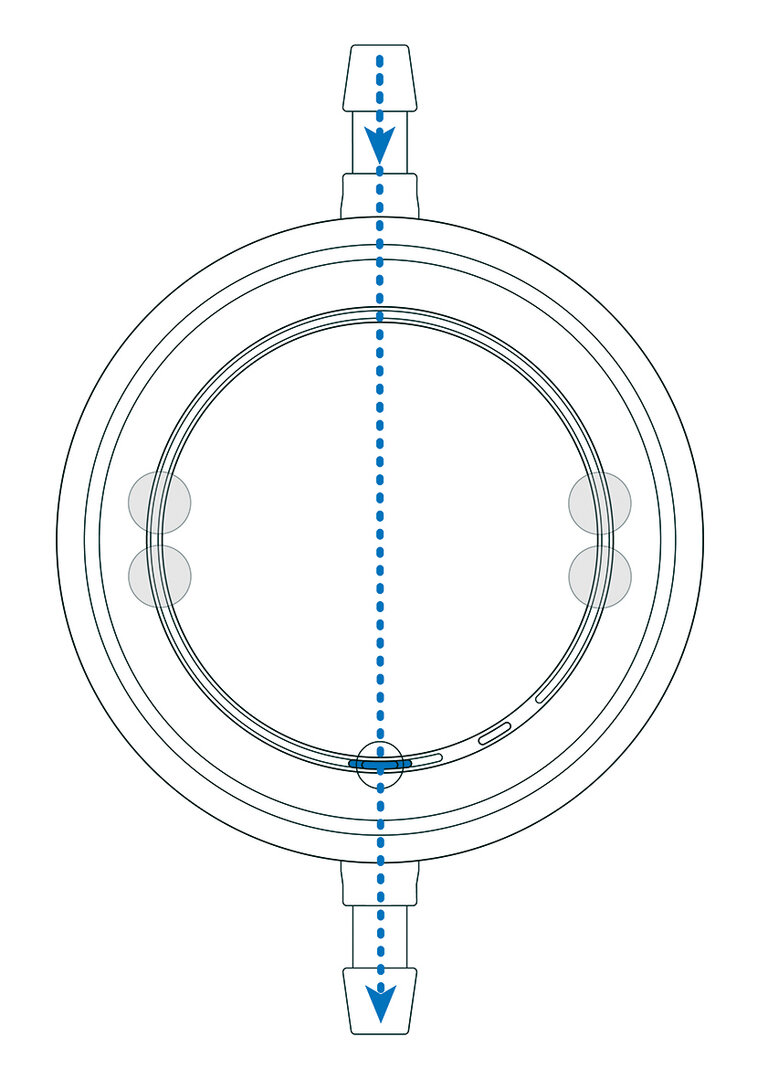
Flow-reduction level 0
The inlet and outlet of the flow channel are directly above each other. The cerebrospinal fluid flows almost unhindered through the M.flow. There is only a slight flow-reduction effect.
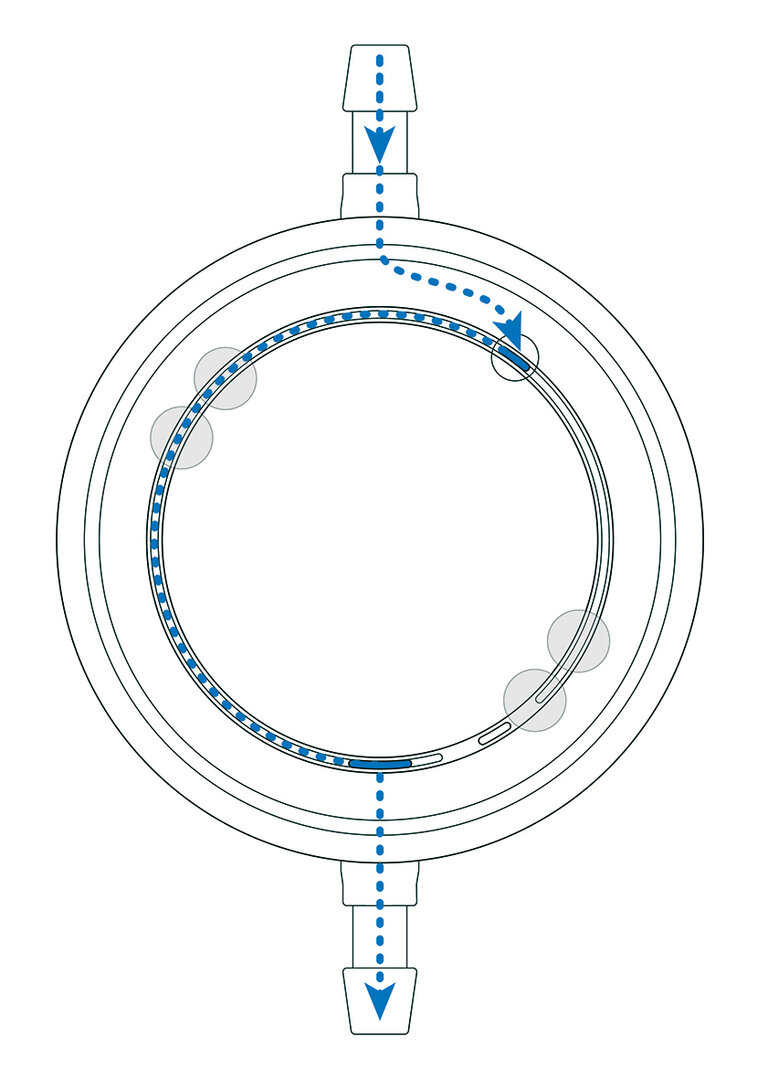
Flow-reduction level 7
The inlet into the flow channel is to the right of the inlet connector. The cerebrospinal fluid must now first pass through 70 % of the narrow flow channel before it can flow through the outlet. This reduces the speed at which the cerebrospinal fluid is drained, resulting in a stron flow-reducing effect.
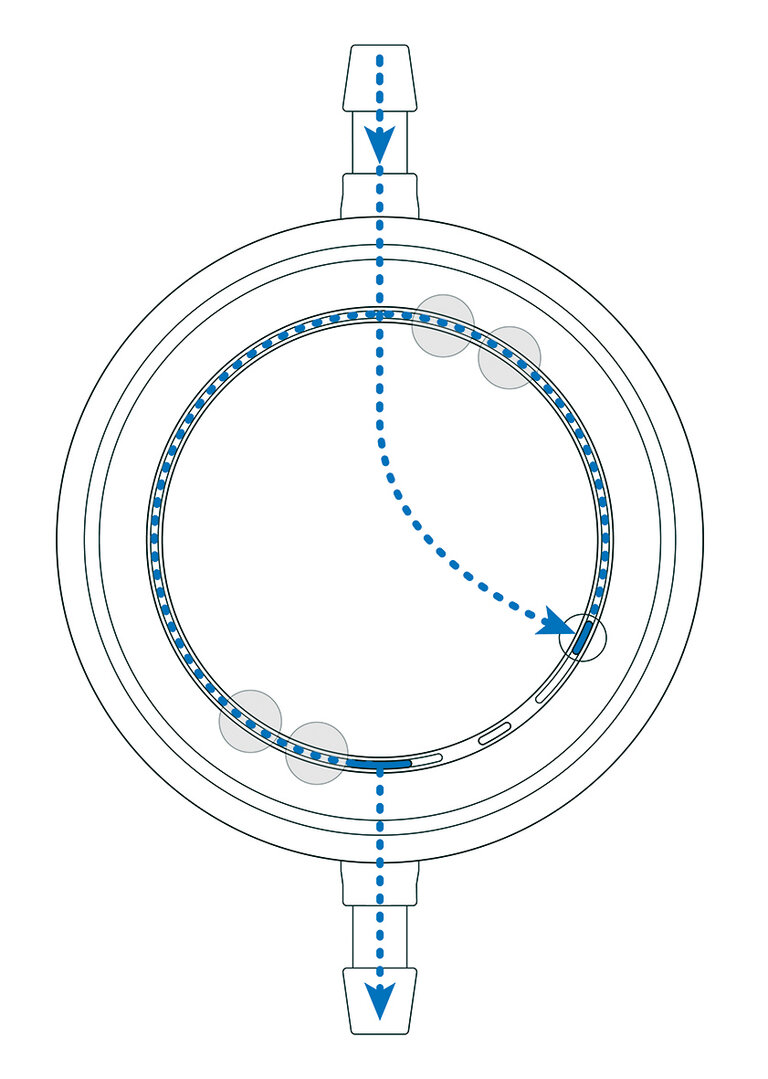
Flow-reduction level 10
The inlet is at the end of the flow channel. The cerebrospinal fluid must now flow through the entire length of the narrow flow channel. The flow reduction effect of the M.flow is strongest in this setting.
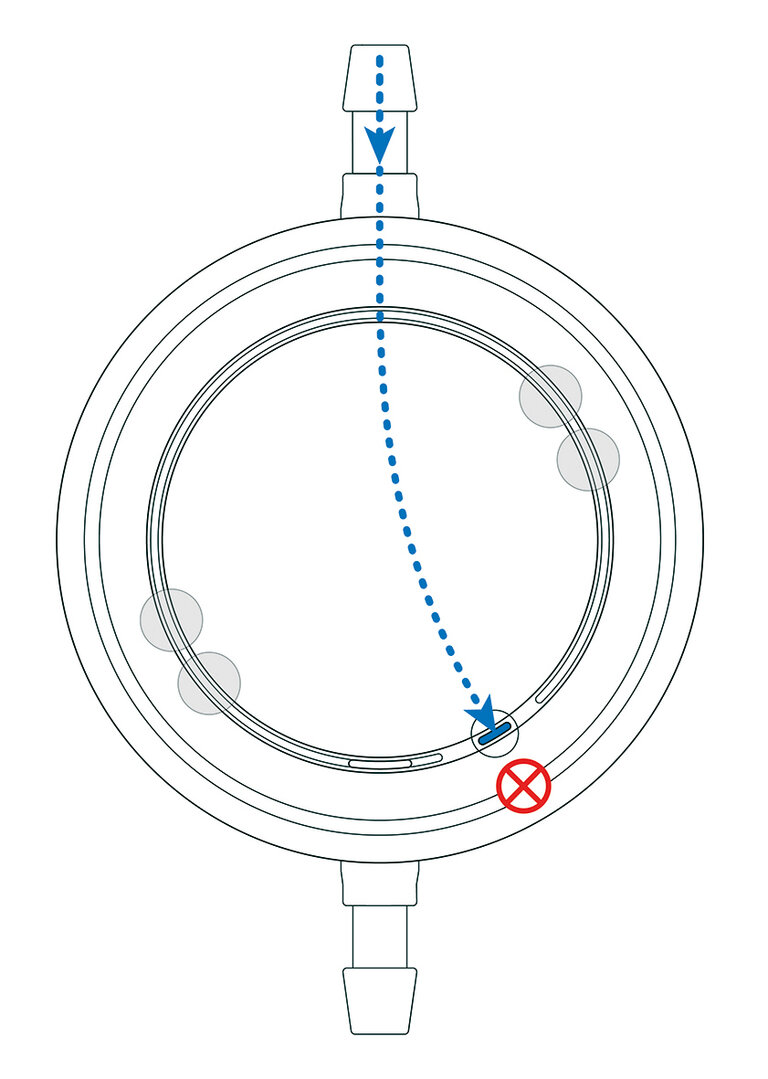
Flow-reduction level Real Off
The M.flow also has a switch-off function. In this position, the inlet is positioned over a flat surface that closes the inlet. As a result, the connection between the inlet and outlet is interrupted and no cerebrospinal fluid can be drained. The flow reduction level Real Off completely stops the flow through the entire shunt system.
M.flow ®
VALVE ADJUSTMENT
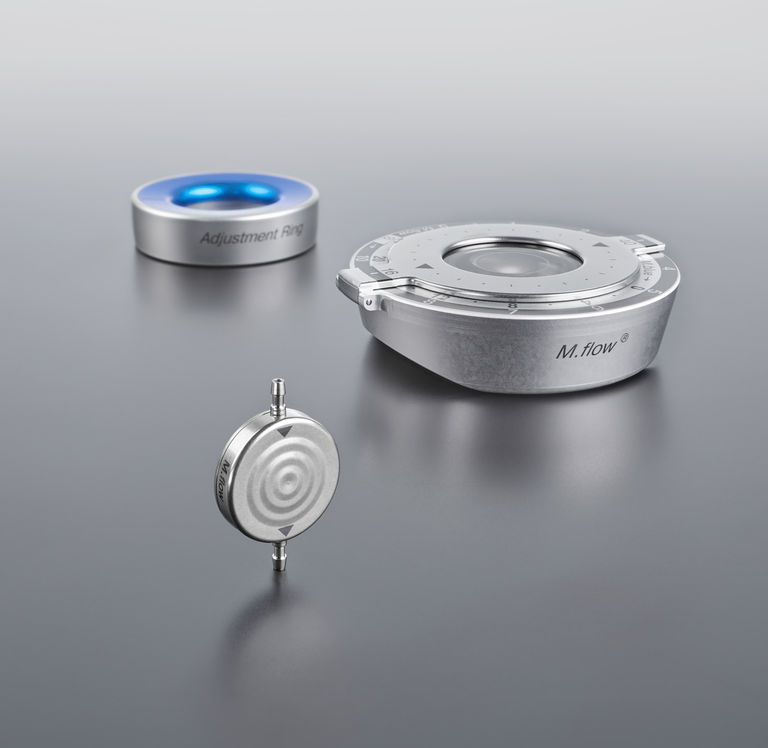
"Active-Lock"-Mechanism
The ‘Active-Lock’ mechanism prevents the M.flow from being unintentionally adjusted by external magnetic fields. This makes the M.flow compatible for MRI examinations up to 3 Tesla. X-ray control after MRI imaging is therefore not necessary and patients are spared additional radiation exposure. The braking mechanism is released by active pressure on the housing. If no pressure is exerted on the M.flow, it is therefore safe from unintentional adjustment.
Find out more about our M.flow adjustment instruments.
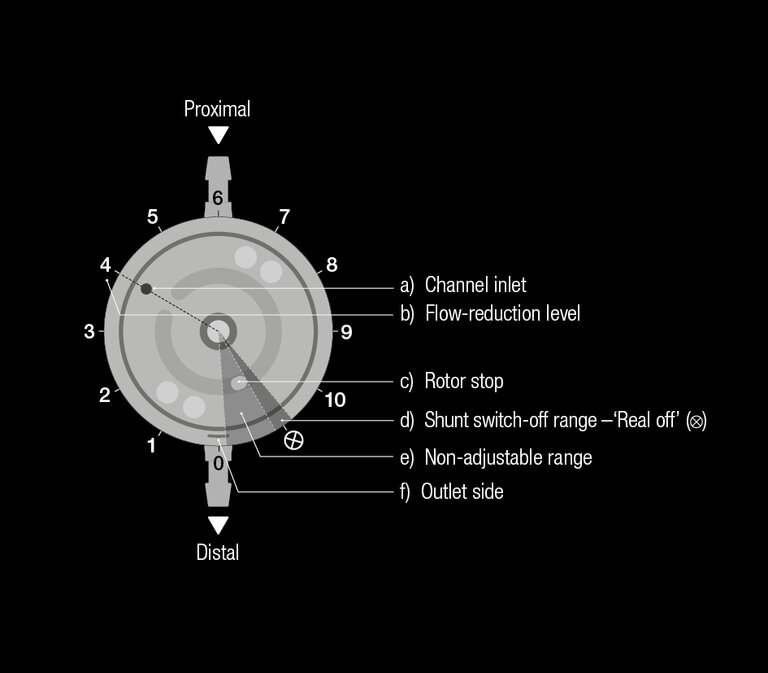
M.flow®
PRESSURE LEVEL DETECTION IN X-RAY IMAGE
The set flow-reduction level of the M.flow can be reliably checked at any time with the M.flow compass without an additional X-ray examination.
For detection in the X-ray image, we recommend using the X-ray template. The flow direction and thus the alignment can be determined using the rotor stop and the outlet. The position of the flow channel inlet indicates the set flow reduction-level (here in the example: flow-reduction level 4).
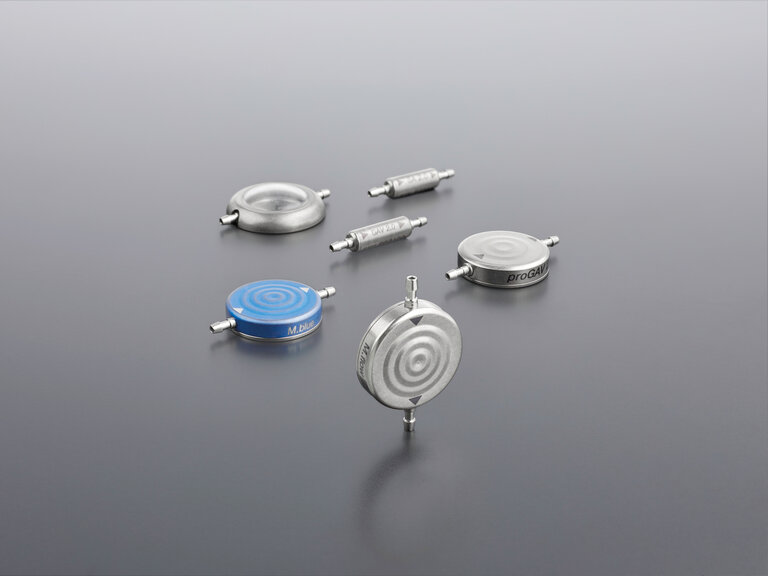
DO YOU HAVE ANY QUESTIONS ABOUT THE PRODUCT?
WE ARE THERE FOR YOU

FOR OUR SALES EXPERTS
We are there for you!
Dear sales & shunt experts all over the world,
our toolbox is big. If you need something to make MIETHKE shunts easier to understand or have new ideas, please get in touch with us. We look forward to exchanging ideas and - who knows - maybe what you are looking for is already there and we can easily make it available to you. Or we can develop something with you that could also be very helpful for other markets.
Your MIETHKE Marketing Team

OUR PARTNERSHIP
WITH B. BRAUN
B. Braun and MIETHKE - Together for a better life with hydrocephalus
We have a long and intensive partnership with B. Braun in the field of neurosurgery. We are driven by a common vision: to improve the lives of hydrocephalus patients around the world with innovative solutions.
Our partnership is an exciting combination of B. Braun's nearly 180 years of expertise as one of the world's leading medical device and pharmaceutical companies and our agility as an innovative company and technology leader in gravitation-based shunt technology.
Our strong partner in neurosurgery:
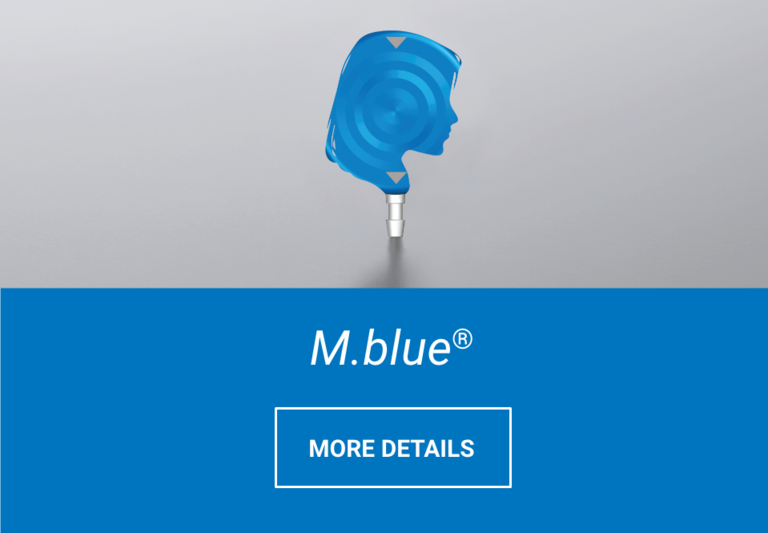




![[Translate to English:] M.flow Instrumente Lokalisieren The M.flow compass is used to determine and set the throttle level of the M.flow.](/fileadmin/_processed_/3/e/csm_MIETHKE_Mflow_INM_lokalisieren_aef95af73e.png)
![[Translate to English:] M.flow Instrumente prüfen The M.flow compass is used to determine and set the throttle level of the M.flow.](/fileadmin/_processed_/1/f/csm_MIETHKE_Mflow_INM_pruefen_63c5c31766.png)

